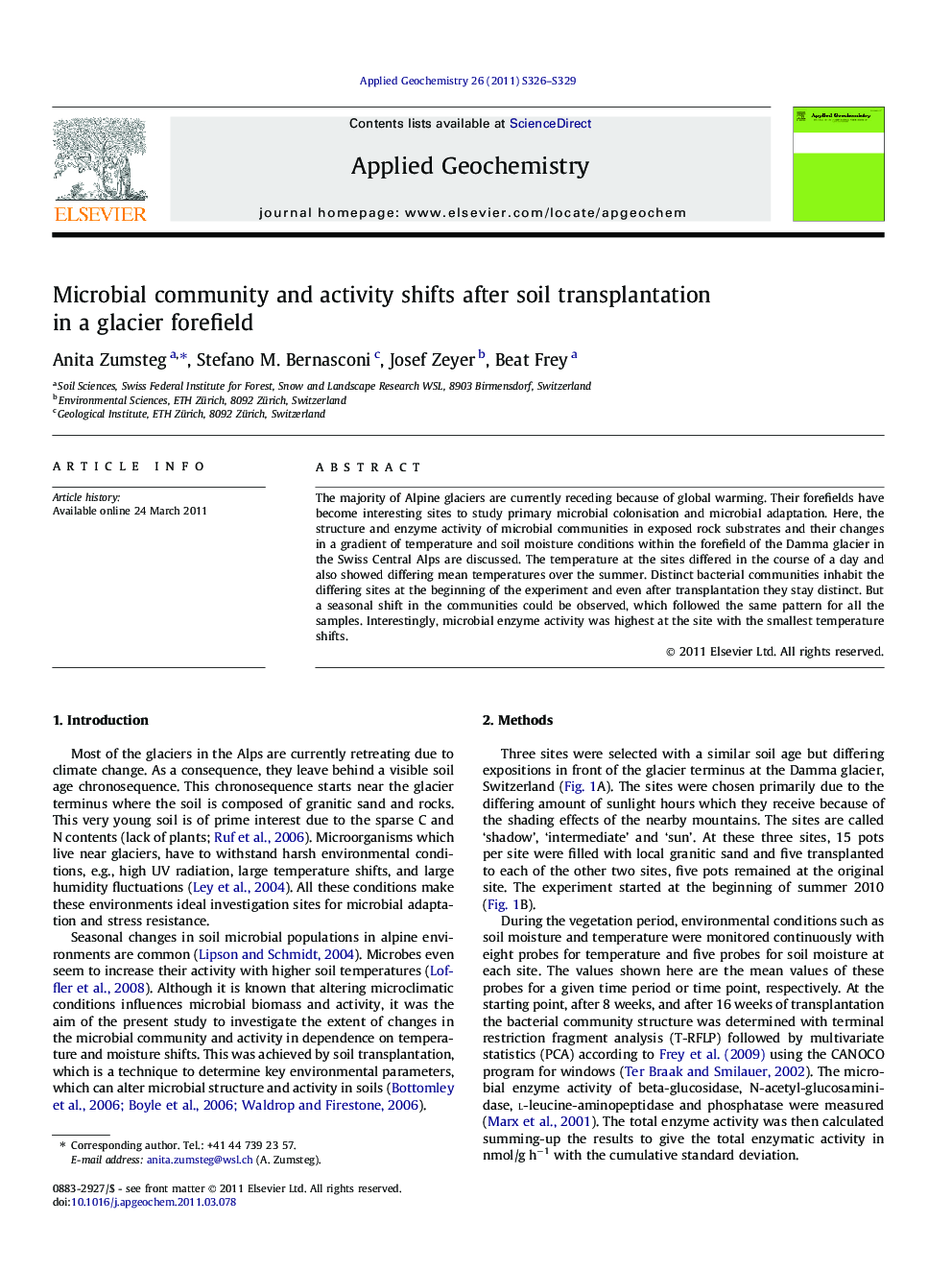| Article ID | Journal | Published Year | Pages | File Type |
|---|---|---|---|---|
| 4436538 | Applied Geochemistry | 2011 | 4 Pages |
The majority of Alpine glaciers are currently receding because of global warming. Their forefields have become interesting sites to study primary microbial colonisation and microbial adaptation. Here, the structure and enzyme activity of microbial communities in exposed rock substrates and their changes in a gradient of temperature and soil moisture conditions within the forefield of the Damma glacier in the Swiss Central Alps are discussed. The temperature at the sites differed in the course of a day and also showed differing mean temperatures over the summer. Distinct bacterial communities inhabit the differing sites at the beginning of the experiment and even after transplantation they stay distinct. But a seasonal shift in the communities could be observed, which followed the same pattern for all the samples. Interestingly, microbial enzyme activity was highest at the site with the smallest temperature shifts.
